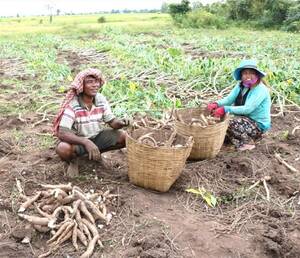National Soil Information for Cambodia

Project symbol: TCP/CMB/3602
National Soil Information and Land Suitability Evaluation System for Cambodia
Agriculture is of key importance in Cambodia, owing to the fact that it is a major source of employment, and therefore supports the livelihoods of many people. Despite this, it is widely acknowledged that a large part of Cambodia’s agriculture sector could be more profitable. Low productivity, the low level of diversification and inappropriate land management all contribute to low profits in the sector. A lack of knowledge of the natural resource base, particularly of soils, and also a lack of knowledge regarding the matching of natural resources, i.e. pairing soils with different land uses, are contributing factors to this poor land management. There is a lack of accurate and current soil and soil suitability information in Cambodia. Data regarding different soil types and their properties are either out of date or have not been compiled into one place. The primary sources for national soil information are a soil map developed by Charles D. Crocker in 1962, and a database of field observations and laboratory analyses at the Cambodian Agricultural Research Institute (CARDI), which mostly contains data on a very small part of the country. This makes it nearly impossible to find modern, reliable soil information and to generate land suitability assessments for different crops. The primary need of stakeholders in this area of the agricultural sector is to have access to information on land suitability for determining land use, with management options included. This requires: (i) research that matches potential land uses and related management options to available land.
BACKGROUND INFORMATION
FAO Strategic Objective 2: Increase and improve provision of goods and services from agriculture, forestry and fisheries in a sustainable manner.
Corporate output 2.4.3: Capacity development support is provided to institutions at national and regional levels to plan for and conduct data collection, analyses, application and dissemination
CPF 2016-18:
Output 2.1: Increased capacity of targeted stakeholders to carry out inventories and assessments of natural resources, the impact of climate change and to monitor and report.
Actual EOD: 1 February 2016
Actual NTE: 31 January 2018
Total Budget: USD 297,000
